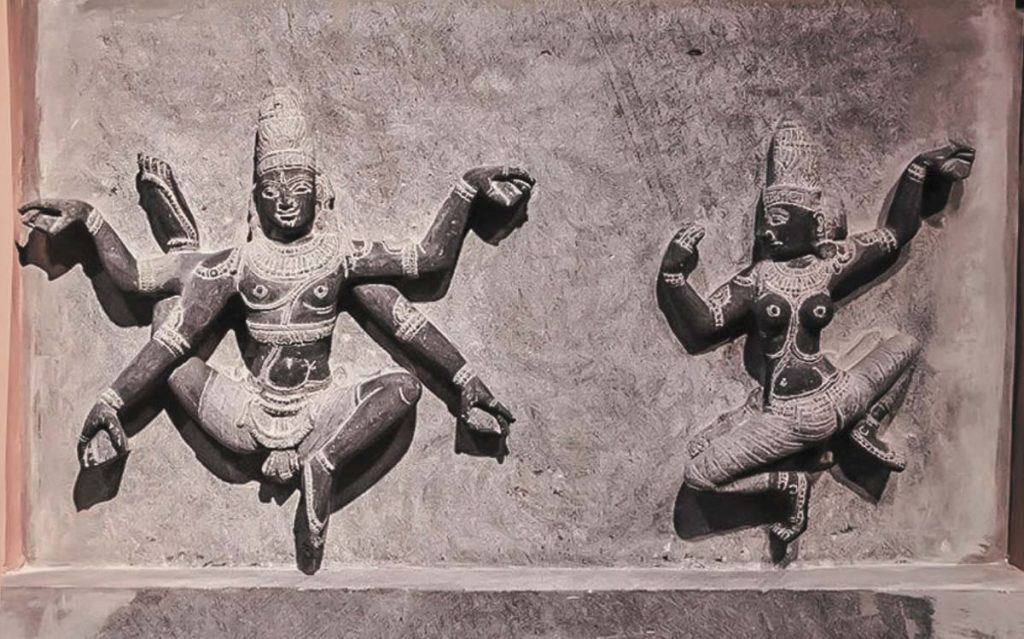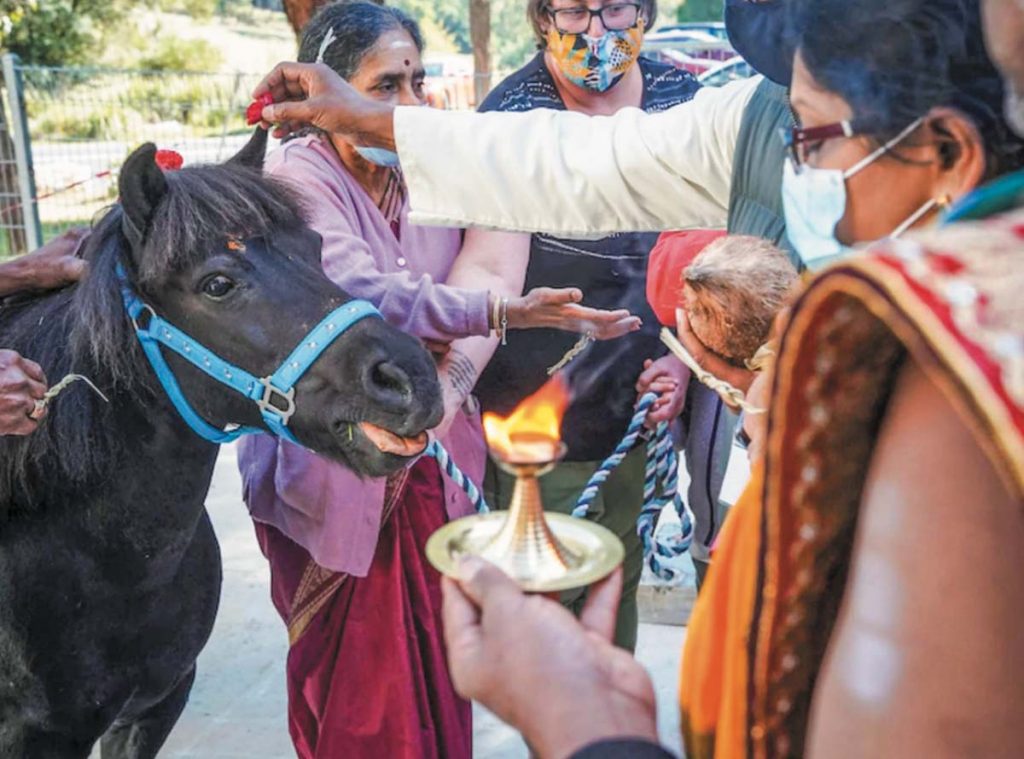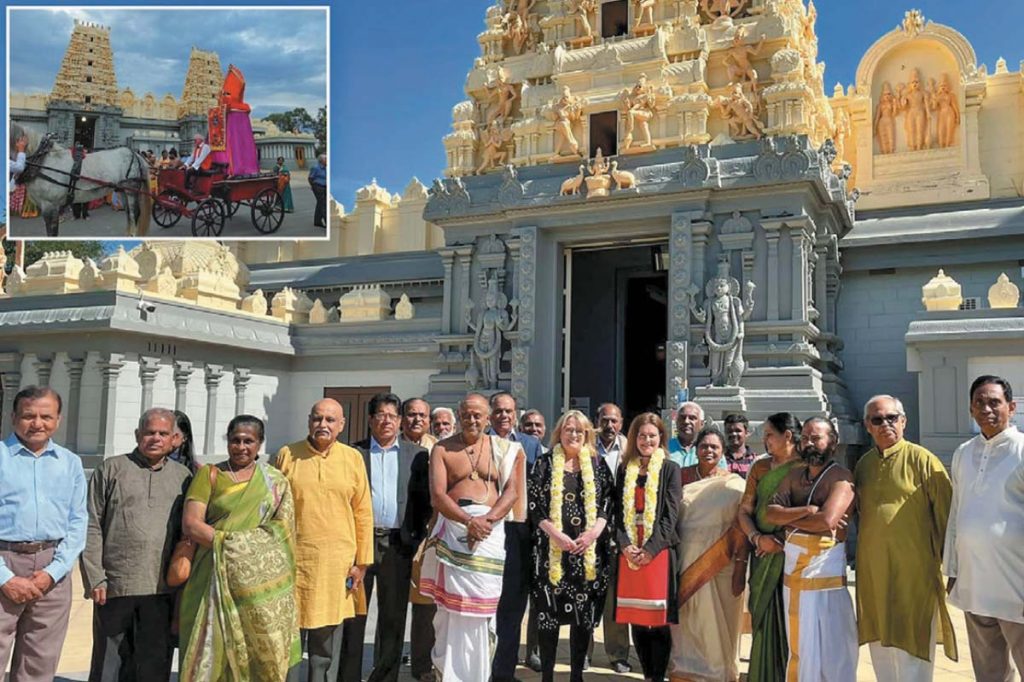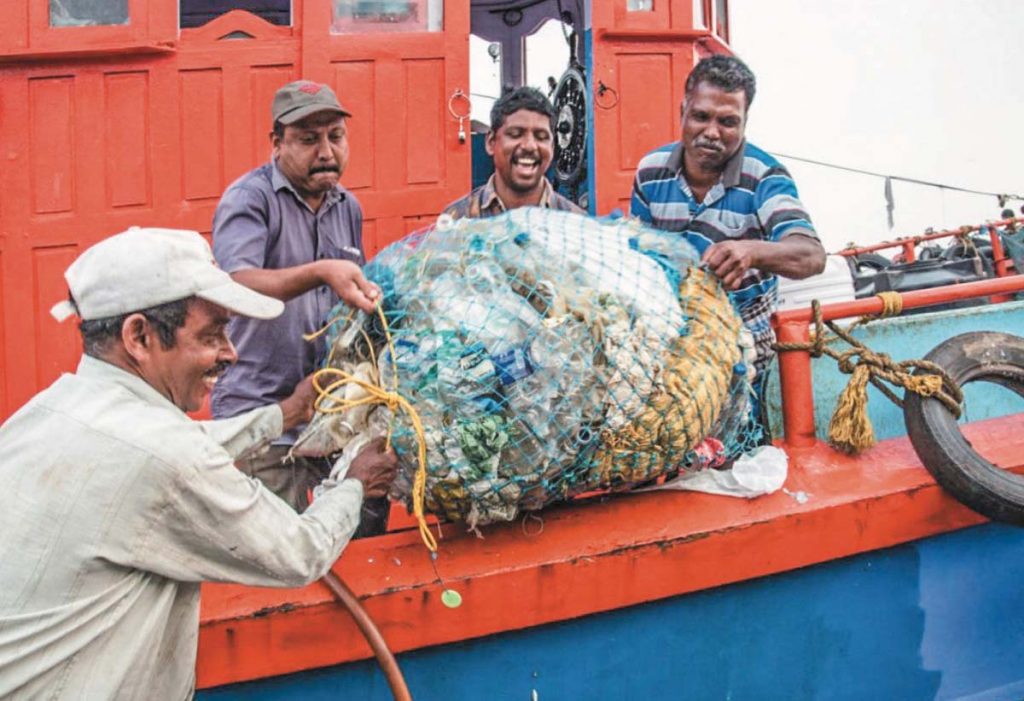THE ARTS
Celebrating the Seminal Scripture of Indian Dance
The bharata muni temple is located in Pattipulam village, just an hour’s drive south of Chennai, India. The Casual Walker website (bit.ly/BharataMuni) has a marvelous slide show presentation of both the temple and the adjacent Bharata Museum dedicated to the author of Natyasastra. This ancient text, plausibly dated to before the 5th century bce, is a comprehensive treatise on music, dance and theater whose influence in India cannot be overstated.


The origin of Bharatanatyam dance in particular can be traced directly to the Natyasastra, and this is the context of the temple and museum created by Dr. Padma Subrahmanyam, 78, a classical Bharatanatyam dancer and recognized scholar of the performing arts.
What is most remarkable at the museum is her interpretation of the famed 108 dance poses of Siva as Nataraja, Lord of Dance. She felt that the few existing sculptural depictions of these poses, which are described in detail in Natyasastra, do not capture the movement inherent in each. To attempt to convey this, she created 108 sculptures showing Siva and Parvati dancing together for each pose, which brings the intended movement to life.


SINGAPORE
The Strange Case of a Temple’s Purloined Jewelry
The sri mariamman temple in Singapore’s Chinatown district placed implicit trust in its priest to protect the temple’s substantial inventory of jewelry, valued at over us$1.5 million. But in February 2021, as reported in www.todayonline.com, Kandasamy Senapathi, the priest of the 149-year-old temple, was arrested for misappropriating and pawning gold jewelry. As a result, Singapore’s Hindu Endowments Board is taking steps to more closely track all the valuables in the four temples it manages.
Between 2016 and 2020, Senapathi allegedly took 174 pieces of jewelry from the temple and pawned them, then eventually retrieved them from the pawnshop in time to have them appear at the next temple festival where they would be expected to be on display.
But during one festival, someone in temple management noticed gold ornaments were missing. When questioned, the chief priest returned all of pieces and was fired. Ultimately, the temple did not suffer any loss.
The news reports do not explain how Senapathi profited from this pawning and redemption scheme, but do say he wired $105,000 back to India during this time. Apparently, he used the funds for some sort of business venture, but because of the Covid-19 impact on business, could not make the last redemption in time, and so they were found missing.
Senapathi, 37, faces multiple charges under Singapore law. He could be sentenced to many years in jail and fines up to $375,000. He remains in custody, unable to post bail of $75,000.
This incident is an object lesson for other temples to maintain multiple checks and balances on their valuables.


AUSTRALIA
Two Melbourne Temples Get A Boost During the Pandemic
Showing the resilience of the hindu community in and around Melbourne, Australia, two temples made major strides in early 2021. The Sri Vakrathunda Vinayagar temple outside Melbourne officially reopened on January 25, 2021, after us$3,000,000 in renovations under pandemic conditions. The work included spectacular ornate granite stones carved in India and assembled to create new sanctums and a six-ton dome over the main Deity. Some 2,000 devotees attended, staggered throughout the day, with temperature checks and social distancing.
Then in April, 2021, the Victoria state government gave us$388,000 to the Shri Shiva Vishnu Temple in Carrum Downs, as part of a $16 million infrastructure improvement project intended for multicultural community facilities suffering from the impact of the Covid-19 pandemic.


Founded in 1982, this is the largest Hindu temple in the southern hemisphere. Its land was acquired in 1984, and the temple opened ten years later. In a normal year, 200,000 devotees visit.
The 2021 grant brings to us$620,000 the total government grants to this temple in the last seven years. It will go toward the construction of a new multi-purpose hall.
The 2016 census showed 135,000 Hindus in Victoria state and 440,000 in the country—1.9% of Australia’s total population.


ENVIRONMENT
Kerala Fishermen Cash In On Ocean Plastic Trash
Until recently, the plastic fishermen found in their nets every time they drew them in was just a nuisance, something to be picked out and tossed back in the ocean. But now that plastic is being collected, brought to shore and recycled.
A prime use is for road building. A number of Indian cities and villages have started adding 8 percent recycled plastic to their asphalt for roads, following some demonstration projects around Chennai.
The program started in 2017 as the Suchitwa Sagaram or Clean Seas initiative of the Kerala state government. According to a report in The Hindu, there are 55,000 people working on 3,600 boats. Under the program, harbor authorities distribute bags to each boat with instructions to collect all the plastic caught in their nets.
As of April, 2021, the program has collected 176,000 pounds of plastic, more than half of which has gone into 84 miles of road.
The program has detractors, including environmentalists themselves. A 2019 article on the environmentalist website chinadialogueocean.net carries the subhead “Using salvaged plastic waste in roads may be doing more harm than good.”
There are two environmental concerns. Toxins are released when the plastic is heated with the bitumen. Furthermore, the method just delays actually dealing with the plastic itself.
As one NGO representative put it, “You are hiding your plastic waste for some time and converting all your roads into toxic land.” They would prefer the focus to be on reducing plastic use altogether.


USA
Bill to End Alabama’s Ban On Yoga Fails to Pass
In march 2021, the alabama state senate defeated a bill that would have modified a 27-year-old law forbidding the teaching of yoga, hypnosis or meditation in public classrooms. The bill’s sponsor, Democrat Rep. Jeremy Gray, told the Associated Press, “This whole notion that if you do yoga, you’ll become Hindu—I’ve been doing yoga for ten years and I go to church and I’m very much a Christian.”
The bill would have allowed public schools to teach poses and stretches if they so choose, while expressly forbidding the use of chanting, mantras, mandalas and the greeting “namaste.” The director of the conservative organizations opposing the bill said, “If this bill passes, then instructors will be able to come into classrooms as young as kindergarten and bring these children through guided imagery, which is a spiritual exercise, and it’s outside their parents’ view. And we just believe that this is not appropriate.”
Briefly
The Telangana State endowments Department reports that the Sitaramaswamy Temple at Sitarampur has received little income from its 1,148 acres of land for decades. It is unknown how many temples are facing the same problem in the new state, which was split off from Andra Pradesh in 2014 with Hyderabad as its capital. The land records of the temples are not in the public domain.
A related case has come up in Odisha. In March 2021, the government announced a plan to sell over 35,000 acres belonging to the famous Lord Jagannath Temple in Puri. According to News Bharati, “The decision of the Navin Patnaik government in Odisha to sell the land of the Lord Jagannath Temple has come under the sharp criticism from the devotees who feel that this is the betrayal of the trust of the millions of Hindu devotees.”
Looted objects from Afghanistan were handed to the Afghan ambasaddor, Roya Rahmani, by the Manhattan district attorney’s office on April 19, 2021. The 33 antiquities, both Hindu and Buddhist, were part of a hoard of 2,500 objects valued at us$143 million seized from Subhash Kapoor, a Manhattan art dealer, between 2012 and 2014. Kapoor is currently in jail in India on smuggling and theft charges. Upon receiving the items, many of them delicate heads made from stucco, clay and a soft stone known as schist, a grateful Ms. Rahmani nonetheless warned that “the environment that allows for the plundering of Afghanistan’s treasured antiquities is the same environment that allows for the perpetuation of conflict.”
The Sree Sree Anandamayee Kali Mandir in Brahmanbaria, 30 miles east of Dhaka, Bangladesh, was ransacked in late March by a group called Hefajat-e-Islam. In Magura district, an equal distance west of Dhaka, attackers destroyed buildings including an adjacent temple at a cremation ground. A month earlier, several thousand members of Hefajat-e-Islam looted Hindu homes in the Sunamganj district.
in February, 2021, The indian medical association criticized Dr. Harsh Vardhan, the Union Minister of Health, for appearing to endorse the Coronil treatment for Covid-19 developed by Pantanjali Ayurved Company. Economist Saket Hishikar, in an article in Moneylife, objected to this criticism, saying he was baffled by the attack on ayurveda, which he called “an important part of India’s soft power projection” and of recognized value. He concludes: “The idea of making profit from human suffering that the British implanted has today made the dominant system unethical and way beyond the means of common man. Thus, it is imperative that the government create a level playing field, as ayurveda can offer treatment of many common ailments at one fiftieth the price of allopathic medicine.”
Malaysia’s government has allocated one million dollars to help 1,934 Hindu temples in the country that have seen a sharp drop in income during the Covid-19 pandemic. According to Malaysia Hindu Sangam president, Datuk R. S. Mohan Shan, who pleaded with the government for help, the funds will allow temples to pay at least part of their basic expenses. The limit on weddings in particular has impacted the temples’ earnings.
The United States Congress officially endorsed the concept of reincarnation in a bill passed at the end of 2020. Though probably not their intent to make a religious statement, the Tibetan Policy and Support Act, according to Religion News Service, “has drawn attention for weighing in on the current Dalai Lama’s reincarnation, one of the few instances the Buddhist concept has been mentioned in US law.” The actual intent was, as expected, political, with the goal of preventing or at least weakening the Chinese government’s claim to name (and therefore control) its own Dalai Lama. Traditionally, the reborn successor is found and verified by a group of disciples close to the previous Dalai Lama.


